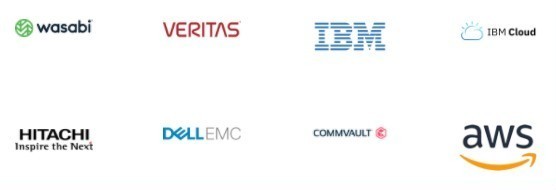FalconStor’s Journey to the Hybrid Cloud Decreased our IT Spending by 35%
In late 2021 our data center looked a lot like other mid-sized enterprises still do: exclusively on-premises equipment providing mission-critical services to the company. In our case as we are a software developer, this primarily meant in-house software development, testing, and customer support. As an ISV, we felt it was critical for us to control the details and specifics of all aspects of our IT environment in order to have confidence in what we delivered.
All this began to change as our business in the IBM market began growing, and we became familiar with IBM Power Virtual Server and what it offers in terms of on-demand infrastructure-as-a-service, piquing our interest. Thus began our journey to the hybrid cloud, and for the Too Long; Didn’t Read crowd, here’s the summary:
TL; DR: It’s been awesome. Saved us money. Made us more flexible and agile in development and shortened our support cycles. In short, it’s one of the best IT moves we’ve ever made.
It just ran.
Our first step on this journey was to try running StorSafe VTL in PowerVS, which turned out to be a simple spin-it-up-and-run-it process, with no issues at all. We then added IBM’s Cloud Object Storage (COS) to the mix, to reduce our storage costs. IBM COS is integrated with PowerVS and offers a less expensive way to store unstructured data than block storage.
Next we migrated workloads and started running them in PowerVS.
With this basic infrastructure in place, we wanted to begin using PowerVS for development and QA, which meant migrating workloads that had been on-premises, into the cloud. To make this easier, we developed command-line scripts that automated much of the process, making it fast and straightforward. At this point our engineers are now running their software development natively in PowerVS which has enabled them to each have dedicated LPARS without having dedicated equipment, as well as the ability to spin up or down new environments without CAPEX. This has saved us substantially on all the associated on-premises data center costs, as to be expected, but also helped make development more efficient and agile. All of this was accomplished without any training necessary – it was completely transparent to the developers.
Expanding beyond IBM i to AIX and Linux, and adding Disaster Recovery.
Since the initial workloads were all IBM i related, we next added both AIX and Linux applications, without issue. And finally, for data protection of all this valuable content, we spun up disaster recovery by deploying a VTL in a separate instance of PowerVS and replicating the data.
We’ve found an additional benefit for our support organization. Rather than the arduous process of trying to build a replica of a customer’s environment in our testing lab, we can quickly and easily duplicate that environment using the PowerVS resources. This has contributed to reducing our support turnaround times for customers.
Where we are today and an unanticipated benefit.
For ultimate flexibility we are maintaining a hybrid model, where we have workloads both on-premises and in PowerVS, to leverage both. All new product development is taking place in PowerVS, with legacy product support remaining on-prem. Testing is running in both locations, as is customer support depending on the demand. We have:
- Reduced overall spending in IT infrastructure by 35% and rack space by half
- Improved our development agility and efficiency, reducing cycles and improving engineering productivity
- Improved our ability to support customer environments, especially complex ones
And the unanticipated benefit
- Easy access to new technologies, such as Power10 in the cloud, that otherwise would have been difficult and expensive to source on a timely basis for on-prem.
In short, our hybrid cloud adoption with PowerVS has been a complete success across all metrics and we’ve gained valuable experience in the process. If you’re contemplating a similar move, FalconStor is here to help you through the process.
See if it’s right for you.
One benefit we had already been enjoying is the tremendous storage savings StorSafe VTL delivers due to our advanced compression and deduplication, and with our move to PowerVS this was not changed. We see reduction in backup storage capacities up to as much as 95% in certain environments and always calculate an estimated dedup ratio of 20:1 for IBM i environments. If you’d like to see what kind of savings you may see, check out our IBM Sizing and Savings Calculator. Or reach out to us here.


